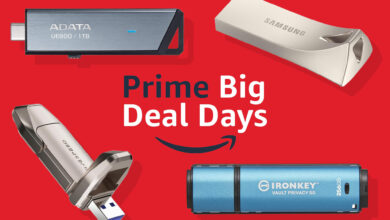The state of performance marketing | Channels, distribution, conversions and managing advertiser success

This State of the Industry report, sponsored by PubMatic, examines how marketers are adjusting their performance marketing strategies and allocating resources outside of walled gardens for success now and in the future.
Performance marketing has cemented its position as the dominant paradigm for advertisers on the hook for ROI. The basic formula is simple: Marketing teams build their campaigns around specific goals and measurable outcomes — making the most of their budgets by recalibrating and optimizing their way to more impactful results.
But the reality is much more complex, and as brands face budget constraints, addressability changes and shifts in consumer behavior, the channels they rely on and how they distribute their advertising continue to evolve. Marketers’ fixation on driving an uptick in sales and revenue is stronger than ever this year, and to do so, teams are leaning even further into performance marketing while diversifying their strategies beyond walled gardens — and taking the huge opportunity of the open more seriously.
In this new State of the Industry report, Digiday and PubMatic surveyed 169 brands to see how they’re adjusting their performance marketing strategies and allocating resources between the open internet and walled gardens. This report explores the changes marketers are making to the channels, distribution and strategies they use for performance marketing in 2024 and 2025 and how they’re increasing budgets and transforming approaches to grow sales and revenue.
- As performance marketers expand their campaigns across the open web, they experience greater flexibility, control and quality in their media opportunities, leading to improved ROI compared to walled gardens.
- Marketers are shifting away from the traditional marketing funnel and are instead opting for a more dynamic, data-driven and customer-centric approach.
- With this shift, marketers are also broadening success metrics to include a wider range of outcomes, such as overall sales, efficiency and publisher relationships.
- With expected increases in performance budgets for the coming year (and an emphasis on targeting precision and high-quality, relevant ads on the open web), marketers are increasing investments in emerging platforms and channels like CTV/OTT, commerce media and contextual targeting.
01
Goals and strategies in 2024
Our survey respondents have three main priorities this year regarding performance marketing: increased sales and revenue (including ROI) at 26%, a focus on efficiency (i.e., workflows) at 24% and investment in new and emerging platforms (23%).
At the top of teams’ minds in 2025: 30% of brands will invest in new and emerging platforms (i.e., commerce media) — versus 23% in 2024 — and 29% will focus on improving creative and personalization efforts (up 8% from the year before). The third priority for next year, at 28%, is increasing sales and revenue (including ROI), up 2% from 2024.
However, the most significant shifts in effort between this year and next involve enhancing creative and personalization strategies, maximizing the use of first-party data and utilizing contextual and cohort-based targeting.
Despite Google’s latest announcement that it won’t deprecate third-party cookies in Chrome, regulatory pressures, consumer demands for privacy and other industry-wide trends suggest a continued movement toward privacy-compliant and sustainable data practices. Before this announcement, strengthening ties with publishers (33%) was at the top of our respondents’ list when making post-cookie preparations. Adopting universal and first-party IDs came in second at 32% and technologies and standards such as PETs took third at 30%.
Additionally, now that Google isn’t deprecating cookies (at least for now) performance marketers have more time to focus on alternative solutions and continue testing those identifiers they feel they need to improve their use. Google’s move — much like Apple’s — should put control in the hands of users, and given how much users want to protect their data, it’s likely the strategic role of cookies will face future pressure if consumers opt out of sharing them.
02
Performance marketing revenue and budget: 2024–2025
Performance is a significant sales/revenue driver in 2024: 57% said they can attribute 41% or more of their annual revenue to the performance team’s work. That percentage declines slightly, with 55% expecting to commit 41% or more of yearly revenue to performance marketing efforts in 2025.
Commensurate with those revenue-related outcomes is the budget our respondents said their organizations put into performance marketing: 56% allocated 41% or more of the budget to performance in 2024. That percentage will shift slightly in 2025, with 53% of the respondents anticipating the same allocation percentage.
In contrast to the 15% year-over-year decline in overall marketing budgets, Gartner notes, the shakeout in the performance marketing budget allocations from our respondents shows that higher-level investments will stay about the same. This is likely due to performance marketing’s reputation for ROI, which protects it against budget fluctuations to some extent.
Our respondents helped unpack where budget allocations go within a given performance marketing team. In the survey, 57% said staffing accounted for 41% or more of their performance marketing budget in 2024 and will decline to 53% in 2025.
The slight reduction in team labor allocation will lead to increased investment in technology — a top-five priority for 2024 and 2025. About half (49%) of our brand respondents said spending on tech and platforms accounted for 41% or more of 2024’s performance marketing budget.

More resources are inbound for next year, as 55% said technology investment would account for 41% or more of their performance budget — an 11-point upward shift.
This finding aligns with the overall trend of marketing teams turning to technology to help them do more with less, thus improving media ROI and workflow efficiency. Many performance marketing teams, for example, are experimenting with how machine learning and AI can strengthen their efforts, help them work quickly and deliver impactful growth.
In our survey, performance marketers considered two environments in which they run campaigns: the open web and walled gardens.
In 2024, the allocation range most picked for open web spend was 61%–80% at 24%. Regarding walled gardens, the highest percentage went to the 1%–20% range (25% said so). Performance budgets are, overall, being spent on the open web over walled gardens — 37% versus 31%, respectively.
In 2025, spend between the open web and walled gardens is fairly split, with the majority of allocation landing in the 1%–60% range, at 62% versus 63%, respectively.
Performance marketing and brand marketing budgets are converging.
Nearly all respondents (93%) said their performance marketing budgets are changing, with 50% of performance budgets increasing in share and 43% contracting. The most prevalent reason is an increase in allocation coming from their organization’s brand marketing line (26%). Close behind, and tied for second place, are allocations moving to (24%) or from (24%) another line (but not the brand marketing budget).
According to financial expert Brian Wieser in a recent Forbes article, the increase in performance marketing budgets (such as what 50% of our respondents are seeing as indicated in the above chart) is expected and likely to continue, with digital advertising representing 76% of all ad spending by 2028 versus 64% in 2023.
03
Teams structures and roles for performance
By a slim margin, most of our respondents said performance marketing is handled by an external full-service marketing agency (14%). A dedicated in-house performance team is second on the list (12%), and in-house teams that manage digital marketing are nearly tied with respondents who said their organization relies on a mix of internal teams and outside agencies (10% and 9%, respectively).
In aggregate, the split between all in-house team models and all external models is virtually even — 38% and 37%, respectively. Also, hybrid models (internal teams of different kinds mixed with external teams of various types) account for 25% of our respondents’ approaches to performance marketing.
04
Open web channels and strategies
Regarding how brands purchase ad inventory from the open web, contextual targeting platforms are at the top of their list of sources (36%). The remaining answer options are nearly tied, suggesting that teams still rely on a heavy tech stack to transact, for example, DSPs and SSPs are used equally.
As they build their performance marketing mix on the open web, brands are putting connected TV and OTT at the top of their channels list, alongside a potentially surprising tie for first place — audio (including radio, podcasts and streaming) at 36%.
Owned-and-operated newsletters and email sit in the second-place spot at 35%, and two channels — one long-standing and one relatively new — are tied for third: OOH (34%) and VR/AR metaverse environments (34%).
It’s not surprising to see CTV/OTT at the top of the list given the rapid growth of full measurability and publishers’ efforts to collect richer first-party user data — valuable insights are emerging to improve open internet advertising. These advancements are fostering the development of new, privacy-conscious strategies that deliver more relevant and precisely controlled ad experiences outside of traditional walled gardens. For buyers, having reliable access to premium, fraud-free CTV supply is crucial to scaling CTV/OTT demand.

The open-web channels on our respondents’ list ladder up to strategic initiatives.
In our survey, using DSPs to buy across sites and apps (including PMPs and open exchanges) topped the list of approaches at 41%. Tied for second among their cited strategies (32%) are email marketing, programmatic and OOH advertising.
Why the open web? The primary reasons for a shift to the open web for advertising are rich creative opportunities (i.e., shoppable video ads, interactive display, etc.) and the ability to innovate and experiment — both at 33% in the survey responses. A significant second place reason at 32%: Our respondents are avoiding platform dependencies and the risks associated with some walled-garden environments. Utilizing open web programmatic platforms fosters healthy market competition, guarantees transparent pricing and inventory quality, offers control over the supply path and improves ROI for buyers.
05
Walled garden channels and strategies
The leading choice for our respondents regarding the walled garden platforms they are using is Google (37%). LinkedIn is their second pick at 31%, and just behind that channel is YouTube at 30%.
Within the platforms marketers are using, walled garden tactics most often lean toward in-app ads (36%), followed by challenges and contests (34%) and in-stream ads (31%).
In contrast to open web strategies, AR/VR strategies were at the bottom of the list at 23% within walled gardens. Our respondents could favor open web channels due to having more control and flexibility in designing and implementing AR and VR experiences. Marketers can customize these experiences without the constraints imposed by walled garden environments. Additionally, running VR and AR campaigns within walled gardens can incur higher costs due to platform fees and the need to meet platform-specific requirements.

06
Obstacles and opportunities
For performance marketers, challenges are inherent to both the open web and walled gardens. Our respondents said the chief challenge for open web advertising is resource constraints, such as budget and talent (33%). That was also a primary challenge for our survey takers regarding walled gardens (48%), but data quality and access present an even bigger hurdle (49%) in the walled environments.
It’s well known that one of the biggest struggles with walled gardens is accessing data and data of quality.
Resource constraints are a significant concern across the industry. In a recent survey from Gartner, only about one-quarter of the CMOs surveyed felt they had an adequate budget to execute their strategies for the year.
Overcoming open web challenges primarily means exploring emerging channels and platforms, including offline integrations for an omnichannel approach, according to our respondents, accounting for 33% at the top of their list. AI-powered analytics and personalization came in second at 32%.
Opportunities are also on the map for performance marketers. According to our respondents, the most promising angle to the open web is the ability to stand out with high-quality and relevant (i.e., targeted) content (28%).
Regarding the walled garden and outstanding opportunities, the promise most cited (28%) is exploring diverse channels and platforms, going beyond traditional advertising options.
Combining high-quality content with addressability, reach, frequency management, accurate measurement and attribution on the open internet is transforming the future of performance advertising. This shift significantly impacts how effectively and precisely advertisers can engage their audiences.
Compared to walled gardens, the open web has high-quality, premium content that provides buyers incremental reach while increasing ROI.
The primary method for addressing challenges in walled garden-based performance marketing strategies is through AI solutions, with 41% of respondents emphasizing this approach. These solutions are fundamental to open web technologies, utilizing machine learning and AI to continually assess setups and performance, identify optimization opportunities and scale buys.
When asked if they could change one thing about performance marketing in 2024, the top response was promoting sustainability and social impact (advocating for positive change in society), at 16%. An equal percentage (15%) said that strategies that prioritize brand equity and long-term brand health should be advocated, as well as ethical and responsible marketing practices that align with consumer expectations and values.
“Advertisers’ increased focus on sustainability and social impact highlights how marketing not only drives revenues but reinforces corporate values,” said Kyle Dozeman, Chief Revenue Officer, Americas at PubMatic. “As more brands prioritize these areas, we continue to see positive results for the bottom line, corporate social responsibility and consumer engagement. For instance, supply path optimization (SPO) addresses not only operational inefficiencies but also measurably reduces infrastructure waste and the industry’s carbon footprint. PubMatic’s commitment to SPO eliminates excessive fees and inefficiencies, restoring much-needed transparency to our ever-changing industry.”
Buyers can promote sustainability and positive social impact by effectively measuring environmental sustainability, focusing on tracking their carbon footprint, ensuring transparency in the results and maintaining accountability for themselves and others.
“As companies advocate for ethical and responsible marketing practices in their campaigns and operations, PubMatic helps partners implement and sustain DEI strategies that helps buyers increase their investment in diverse media suppliers,” Dozeman said. “PubMatic’s overall mission is about supporting the free and fair sharing of information across the open internet.”
07
Performance and the funnel
Most of our respondents (27%) said performance marketing approaches the sales funnel as modern, dynamic, data-driven and customer-centric — focused on personalization. The second largest cohort (21%) said they approach the funnel in 2024 as a comprehensive and interconnected space, and they focus on optimizing each stage of it. And 19% said the funnel is collapsing into an integrated, continuous model, more like a circle or web, with each stage influencing the others.
While there are differing views on what the funnel looks like, 82% of respondents see it as changing and moving away from the traditional, linear approach many have long viewed as the standard.
08
The open future of performance marketing
Susan Wu, senior director, marketing research at PubMatic
As performance marketers re-evaluate the marketing funnel to embrace a more fluid, data-driven and customer-centric approach, they are also redefining the metrics they use to gauge success to encompass a wider range of outcomes — such as overall sales, efficiency and publisher relationships. Many teams are setting their sights on experimenting with emerging platforms and integrating offline channels, leading them to scrutinize their spending and select more transparent platforms, like those on the open internet, where they can exercise greater control.
“Performance marketing and brand marketing budgets are merging, suggesting that marketers are combining strategies and resources from both approaches to more effectively target and engage their audiences,” said Dozeman. “By employing programmatic strategies across the open internet, marketers can enhance operational efficiency, strengthen publisher relationships and boost overall sales.
“SSPs play a crucial role in the performance marketing shift toward the open internet by providing the tools and infrastructure needed to access, manage and optimize digital advertising efforts effectively,” he continued. “They provide enhanced inventory access, improved data utilization, advanced targeting and optimization, transparency and control.”
By choosing high-quality inventory and supporting partners who advocate for responsible media, brands promote ethical practices and responsible journalism. Thoughtful allocation of performance dollars not only protects but also elevates brands.
One trend has been key in shifting the power dynamic: the move of targeting from the buy side to the sell side. Sellers’ trusted relationship with their audiences enable quality content providers across the open internet to deliver superior, brand-safe and efficient advertiser outcomes. To optimize their efforts, advertisers must stay agile, adopt emerging technologies and strategically leverage the open internet to enhance their effectiveness and achieve better results.
The dynamics between walled gardens and the open internet are constantly shifting, but the effect of the open internet on driving performance marketing is undeniable. As performance marketers extend their campaigns across the open web, they find more flexibility, control and improved ROI compared to walled gardens — often with fewer complications. And, despite budget fluctuations, most respondents anticipate increased funding next year.
The transformation of the digital advertising supply chain and the evolving industry landscape are heralding a new era for the open internet. With the rise of first-party and identity data and the expansion of fully measurable channels like CTV, advanced contextual targeting and commerce media, the open internet offers substantial long-term opportunities for enhancing ROI and achieving impactful advertising results.
About PubMatic
PubMatic (Nasdaq: PUBM) is an independent technology company maximizing customer value by delivering digital advertising’s supply chain of the future. PubMatic’s sell-side platform empowers the world’s leading digital content creators across the open internet to control access to their inventory and increase monetization by enabling marketers to drive return on investment and reach addressable audiences across ad formats and devices. Since 2006, our infrastructure-driven approach has allowed for the efficient processing and utilization of data in real-time. By delivering scalable and flexible programmatic innovation, we improve outcomes for our customers while championing a vibrant and transparent digital advertising supply chain.




